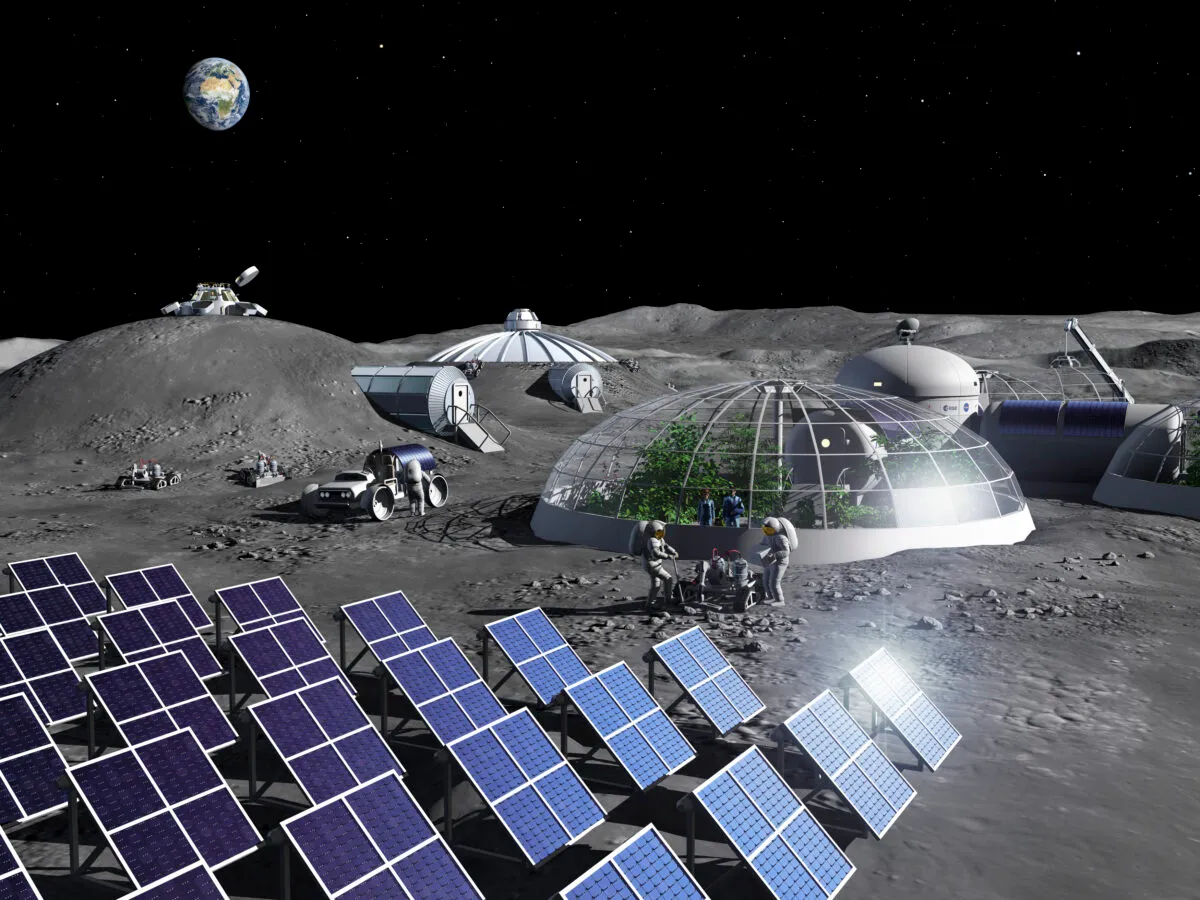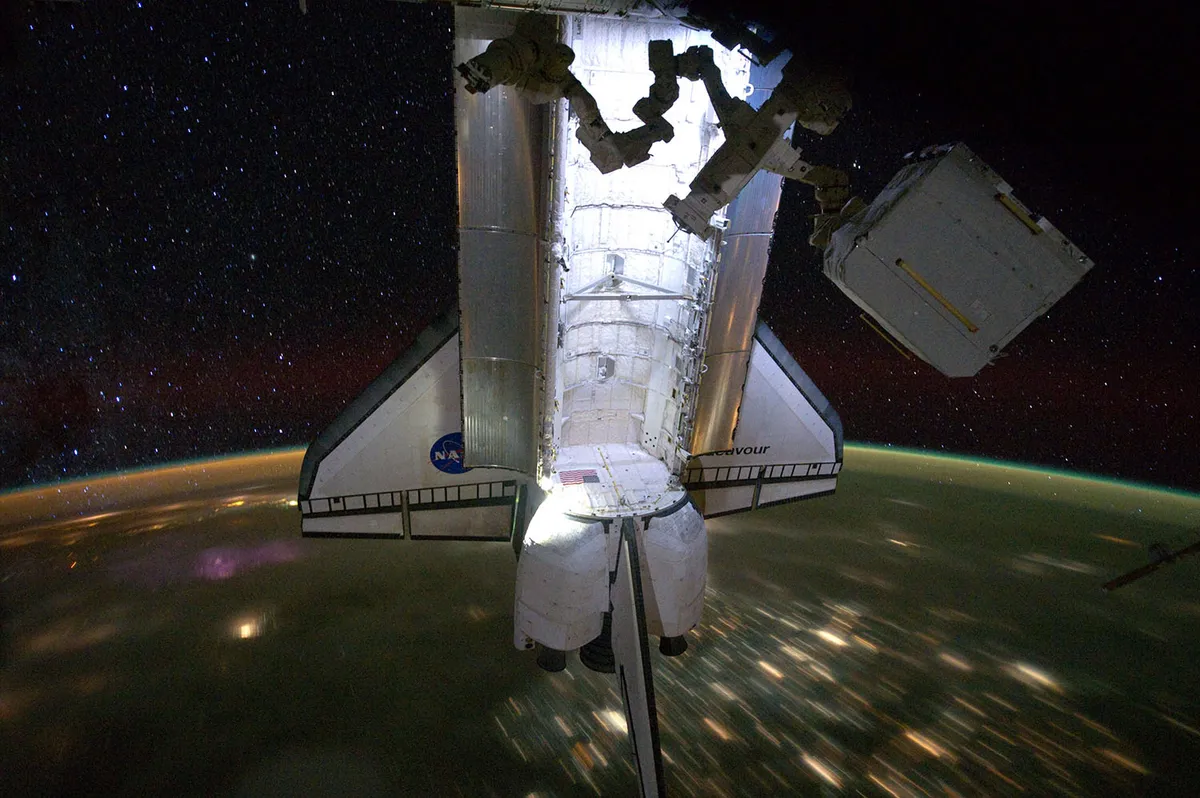It might be hard to imagine now, but there was once a time when US senators listened in rapt attention to a proposals for giant orbiting habitats – a space colony – as a way to ease environmental pressures on Earth.
These structures, at least 3km long, would support tens of thousands of people, all living in comfortable, leafy suburbs.
More futuristic space science

They were the result of a 10-week study into space habitats, completed almost 50 years ago at NASA’s Ames Research Center under the direction of Dr Gerard Kitchen O’Neill.
Back in the 1970s it was possible to talk about space colonies without sounding like a dreamer.
Whatever happened to that idea?

Imagining space colonies as a reality
Dr O’Neill, a professor of physics at Princeton University, was already renowned as the creator of a machine that temporarily stores high-energy particle beams in magnetic fields – a crucial technology behind particle accelerators like the Large Hadron Collider on the French-Swiss border.
However, by 1969 he was disenchanted with senior management and on the look-out for new inspiration. He found it in the wake of Apollo 11’s lunar touchdown.
He said a few years later, "It just seemed to me that… not to try to take part in that unique event in human history would be something I would regret forever."
At first, O’Neill incorporated space exploration as a theoretical concept for his students to explore.
Half a dozen or so took up O’Neill’s challenge with enthusiasm, and together they formulated a plan for space that addressed the concerns of people on Earth: the 1970s energy crisis, triggered by oil embargoes and the growing awareness that the climate was in trouble.

One of their primary inspirations was a computer simulation called World3.
World3 had been produced by a ‘think tank’ called the Club of Rome, formed in 1968 by Italian industrialist Aurelio Peccei and Scottish scientist Alexander King.
In need of data about the environment, the Club of Rome had commissioned a team of analysts at the Massachusetts Institute of Technology (MIT) led by biochemist Donella H Meadows.
In 1972 their book The Limits to Growth sensationally declared that the Earth was running out of resources, and that the ever-growing population could not be supported indefinitely.
Spurred on by this, and by the passion of his students, O’Neill began to champion the idea of "space as a place for people to be in, not just to look at."
He became convinced that "the long-term survival of humanity, and of the plant and animal life that we cherish on Earth, can best be assured by building colonies dispersed throughout our Solar System and beyond."
He also hoped to "reduce the constant threat of wars by opening a new frontier with virtually unlimited new lands and new wealth."

Designing a space colony
O’Neill’s research hit a sweet-spot with its detailed studies of finite ‘closed’ ecological systems, which was an urgent concern for environmental campaigners at the time.
Everything inside his colonies would have to be recycled, from food packaging to human bodily waste.
Especially popular was his proposal that all heavy industry and energy production should be taken into space to save Earth from pollution.
In 1976, his book, The High Frontier: Human Colonies in Space, was a best-seller.
Three space-colony designs were put forward in the research.
'Island One' is a rotating sphere close to a mile in circumference. Its inhabitants occupy the equatorial region, and the colonies get larger with each generation.

Next up is a 'Stanford Torus,' which looks somewhat like the classic wheel-shaped station, only vaster in scale, and capable of supporting 10,000 people.
A free-flying mirror floats near the settlement, reflecting sunlight into the living areas.
But the ultimate design is 'Island Three.' A pair of cylinders, each 32km long and 6km in diameter, are linked at their ends by adjustable beams.
Each rotates in the opposite direction to the other: a simple way of maintaining their correct orientation to the Sun without using thruster fuel.
Inside the cylinders, three areas of land alternate with three window strips, illuminated with mirrors that open and close to create a cycle of day and night.
Each cylinder rotates about 40 times an hour, simulating Earth’s gravity.
A total land area of 310 square miles accommodates several million people, while an outer ring of greenhouse pods provides food.

Fabrication in space
The raw materials for such a colossal construction project were all proposed to come from from lunar minerals.
Once they had been mined, a linear electric motor called a mass driver would accelerate payloads along a rail until they reached escape velocity and shot over the lunar horizon into orbit.
Fabrication of Island Three would take place in orbit at L5, one of the Lagrange points where the Earth and Moon’s gravitational influences cancel each other out.
O’Neill’s assistant, Eric Drexler, proposed that construction would start with simple inflatable structures that could be rotated in front of a metal vapour spray, similar to the devices used to coat microchips with their layers of conductors.
Rods of raw materials would be fed into the system, melted into vapour, then deposited on the surface of the plastic template.
Drexler knew what he was talking about and became a leading pioneer of nanotechnology, in which microscopic objects are manufactured in this way.
Within this shell, O’Neill wanted to build a leafy paradise.
"I had no desire to just invent a space station. It had to look an awful lot like Earth."
But how was all this to be funded? The colony’s initial purpose was to house the builders of a non-polluting power system for Earth itself.
According to O’Neill, "Solar energy was the obvious way to go."
He proposed gigantic orbiting arrays to convert sunlight into a microwave beam, while on Earth there would be fields of collector dishes in deserts to gather the microwave energy and reconvert it into electricity.
This would pay for a colony in less than 25 years, he calculated.

Expanding beyond Earth
O’Neill never considered colonising other worlds. "We sidetracked that very quickly because Mars, or any other alternative planetary surfaces, are fairly unpleasant options," he said.
"They are the wrong distance from the Sun, and have the wrong rotation times and the wrong gravities."
He saw no sense in giving up the solar energy available in near-Earth space in favour of the cold, dwindling sunlight available on a distant planet.
In January 1976, O’Neill testified before the US Senate Subcommittee on Aerospace Technology and National Needs.
The hearing room was packed as he held out the prospect of an "inexhaustible energy source" for an initial outlay just three times the cost of Apollo.
In its subsequent report, the Senate committee said that space habitats were "potentially feasible" and deserved more study.
Above all, "methods for the space-based generation of electricity, using energy from the Sun, should be developed as a significant contribution to the fossil fuel dilemma."

Launching a space colony
NASA was not in a position to build any hardware, but it did fund some theoretical studies, including conferences at Stanford University during 1975 and 1976, where O’Neill’s ideas gained real academic stature.
The only serious flaw in the plan was O’Neill’s casual approach to the first, crucial crews and payloads that would be needed to get the fabrication processes under way.
The fundamental problem was that everyone expected too much from the Space Shuttle, which at the time had yet to make its first flight.
The lunar mass driver, O’Neill reckoned, would call for "a year’s worth of Shuttle flights".
No-one gave serious thought to the problem of launch vehicles, let alone the differences between an Earth-orbiting Shuttle and the hardware required for the first post-Apollo touchdowns on the Moon, or the cramped quarters for the first colony engineers.
"We would use the Shuttle’s external tanks to make modular living quarters for use in low and high orbit and on the lunar surface," he wrote, optimistically.
Just a few minutes’ drive from O’Neill’s offices at Princeton, a firm of consultants was studying the Shuttle’s economic benefits for NASA.
They suggested that 39 flights per year, with up to 500 flights conducted between 1978 and 1990, transporting humans and cargo alike in the same vehicles, would make the Shuttle a winner. O’Neill took this on faith.

Of the many wonderful visualisations by artist Don Davis that were included in O’Neill’s book The High Frontier, none specify customised launch hardware.
With Apollo so recently triumphant, it seemed a given that NASA would come up with a solution.
It took a tremendous salesman to convince politicians that such a grand scheme might not be just science fiction.
O’Neill’s second wife, Tasha, had known him for six years by that time.
She fondly recalls "a Renaissance man with many talents and interests, with an ability to make ordinary people understand complex ideas."
In 1977, O’Neill and Tasha founded the Space Studies Institute at Princeton that’s still going strong today as a non-profit organisation.
Freeman Dyson, a quantum physicist – perhaps best known for the Dyson sphere concept – with a similar fascination for large-scale space engineering, called O’Neill "An accomplished showman, good at handling a crowd."
He wrote those words shortly after O’Neill’s death from leukaemia in 1992, aged 66. Space enthusiasts lost an inspirational figure that day.

Could a space colony still work?
For all its achievements, the Shuttle did not deliver on its early promises and is now retired.
The world is facing economic and environmental challenges.
Can O’Neill’s visions of a space colony be revived in such an uncertain climate?
Certainly solar energy has been harnessed in space to a degree, and NASA is preparing to go back to the Moon with Lunar Gateway, a crewed space station in lunar orbit.
In the 21st century it is the private sector that is taking more of a lead.
Entrepreneur and space activist Bob Werb collaborated with O’Neill in the late 1970s, before founding another high-profile lobbying group, The Space Frontier Foundation.
"The value of Gerard’s vision is more certain today than ever," he said. "The proposed new direction for NASA is fundamentally O’Neillian, because it looks towards enabling technologies that will benefit all of us, instead of just small groups of astronauts.
"The scale of Island Three is still way beyond our capabilities, but small-scale settlements will happen soon."
With commercial space operators like SpaceX and Blue Origin poised to provide more regular access to space, bringing a step-change to the cost of launch; with development of the Gateway space station in orbit around the Moon underway; and with the technology for 3D additive manufacturing established, O’Neill’s vision of half a century ago could be closer to being realised now than at any other time.
Do you think a space colony is realistic or even desirable? Let us know by emailing contactus@skyatnightmagazine.com
